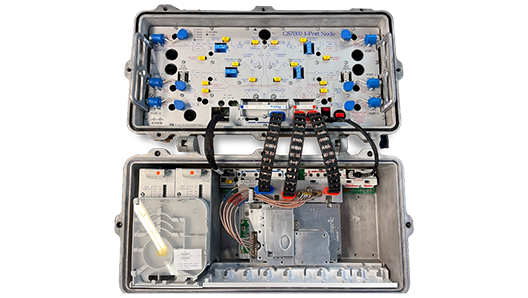The primary goal of virtually every file-based production or broadcast workflow is to improve efficiency. Advanced media storage solutions, now capable of supporting media workflows from end to-end, play a critical role in helping content producers and owners realize this goal.
Centralized storage, which provides a single shared resource available to every application, as opposed to the conventional model in which independent storage systems serve different applications, is especially appropriate for media workflows.
The centralized model not only eliminates the time-consuming transfer of media between discrete storage systems, but also facilitates workflows in which multiple applications can access media concurrently. While there are many network storage solutions in the market, most don’t effectively meet the demanding requirements of broadcast workflows due to insufficient performance and lack of key media-specific capabilities.
Harmonic MediaGrid is an Ethernet-based network storage solution specially designed to provide users of media applications with massive bandwidth and consistently low latency without interruption or bottlenecks. Possessing highly scalable bandwidth capabilities, this system accommodates a growing volume of large media files and supports a large number of concurrent users. Low latency ensures that content can be accessed quickly and simultaneously by applications such as nonlinear editors while maintaining the feel of local storage. MediaGrid is optimized specifically for quick-turn media workflows, such as news, and offers “active transfers,” allowing content to be accessed while it’s still being written to disk.
The MediaGrid centralized storage solution utilizes a distributed file system designed to scale capacity from a few terabytes to multiple petabytes, and bandwidth from one gigabyte per second to tens of gigabytes per second. MediaGrid presents a single name space to access a file system that spans many discrete hardware devices and contains two types of data: the actual file data and the metadata associated with the files (file name and location). File data stored on the system is further divided into slices ranging from 256 kb to 8 MB; slice size is configurable by file type at a folder level, or even as granular as a single file.
To achieve connectivity between MediaGrid and the existing network, aggregated 1-GbE or 10-GbE links are used, and no special host adapters are required on any client device, as all access to the system is via standard Ethernet connectivity. This aspect of the system allows it to provide the connectivity and performance required, and to seamlessly integrate into existing environments. Communication between clients and the system (as well as inter-communication between its components) uses an IP-over-Ethernet network fabric. The main advantage of using Ethernet over other technologies is its widespread acceptance and availability, which results in lower hardware costs, lower operating costs via wider familiarity by operations and support personnel, and faster innovation in the application layers.
Learn more about this topic by clicking this link to download our new tech guide: Harmonic MediaGrid Shared System Overview








